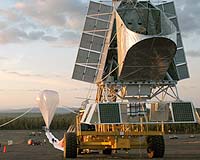While unlikely, there was still a chance that the image showed a juxtaposition of the host star and a faint background star. In order to rule this out, one needs a second observation to show that the star and the planet have move together. If it was indeed a background star, then they would be moving a different rates, and in different directions, and this would become apparent with the second observations.

The same team has now announced that a followup observation with the Gemini North telescope has confirmed that the object is definitely a planet orbiting the host star. They also obtained images at other wavelengths, which confirm the temperature and mass they derived in 2008.
The planet around 1RXS J160929.1–210524. is 8.4 times Jupiter’s mass, and is about 1800 kelvin (2780° Fahrenheit). The planet orbits its star at 330 times the distance from Earth to the Sun.
For more information see the Gemini press release.









